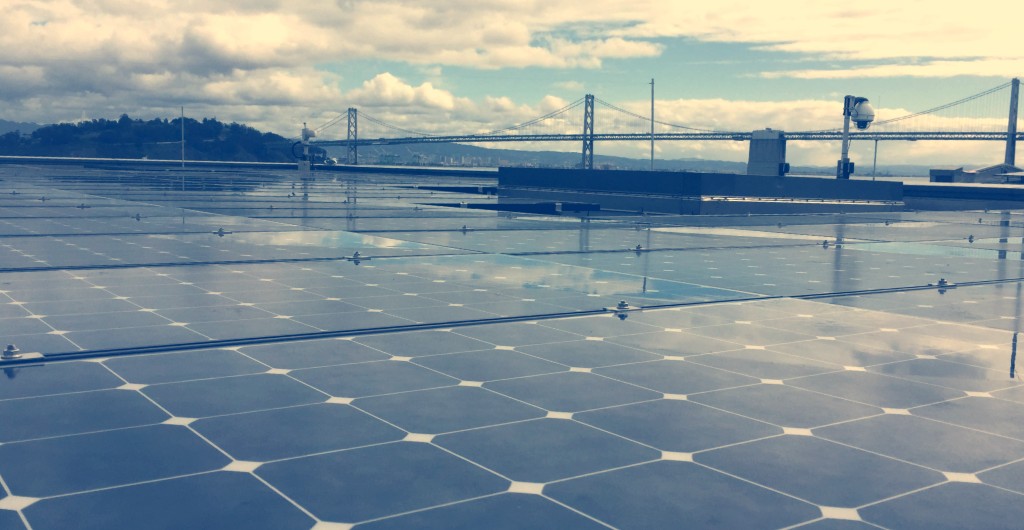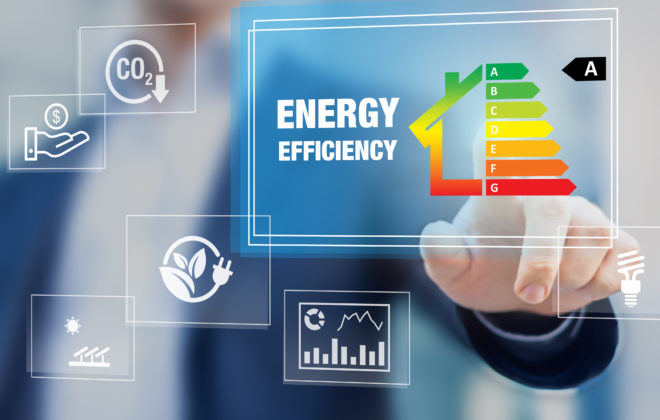
What is Net Zero Energy and What Definition to Use and When

Commercial buildings are getting a lot of attention recently to improve their energy use and become more sustainable in their operations. Terms like Net Zero Energy are becoming talking points for developers, cities, corporations and even states (CA). The popularity of commercial building energy efficiency and renewable technology deployment does not seem to be slowing down. If anything, it is accelerating.
There are many varieties of a Net Zero Energy building based on business types, local regulations, evolving technologies and even energy service contracts. The business models that worked for some of the first Net Zero buildings were state and regionally specific. What might work well for one private company may not provide the same benefit for a campus, or a collection of buildings. It is important to know what model is right for your building, or if Net Zero Energy is the right framework at all.
This guide to Net Zero provides:
- Definitions of the most common types of net zero energy buildings
- Key questions to answer when deciding which one is best for you
- Frequently Asked Questions related to Net Zero Energy Buildings
Types of Net Zero Buildings
The most basic definition of a Net Zero Energy (NZE) building is that it generates as much energy as it uses over the course of a year. This building is directly connected to the electric grid for balancing energy production and use annually. When the grid goes down, the building goes down. Very simple.
There are many definitions of a Net Zero Building, each developed to serve a specific need or building ownership type. The following 6 most popular ones are described below. In full disclosure, the language of each definition is my own wording. And before we dive in, one of the best resources on this subject is New Buildings Institute. Check them out.
Net Zero Energy, Site
This is the classic definition of a net zero energy building. Able to produce and utilize all the energy needed for a year on site. Traditionally these buildings rely on the electric grid to balance energy needs as the storage provider. All losses upstream of the meters (the grid) are not considered.
Net Zero Energy, Source
This definition looks to balance a buildings energy use and the energy losses of the energy grid providing it. Different energy grids have published energy-loss factors for using electricity and natural gas. By accounting for these losses, a building is accounting for its larger footprint and energy needs. This is a way to account for average grid carbon emissions today, since accounting of energy use at a building and upstream on the grid is the same as accounting for carbon emissions.
This definition is mostly used by the State of California’s public buildings and was originally defined by NREL in a brief paper in 2015. This definition of a building may still use natural gas on-site, or other forms of combustibles. The grid impact is lower for gas since it is converted at a building. Sharing operating costs between fuel types can be difficult and often energy generation on-site from electricity cannot count towards equivalent natural gas cost offsets. This definition by the CA State Agency will be applied across departments with many buildings balancing to one NZE source goal.
Net Zero Energy, Electric
Some commercial buildings have called themselves Net Zero Electric. This means all the electricity used on-site is balanced with energy generation, typically on-site as well. Often buildings which still use natural gas for some heating or for some cooking opt for this definition as a way to deliver a building efficiently and reduce energy costs. There is no official organization which provides a certification of this achievement and is often used by private developers or large agencies with energy performance criteria for buildings (Boulder Commons, 2017).
Net Zero Energy, Carbon (Emissions)
This type of zero energy building is defined as one with zero net energy carbon, also known as zero emissions buildings. Typically, the energy use on-site or off-site of a building is balanced with renewable energy on-site. Only the energy use of the building only is considered, though this definition can be expanded to include emissions generated in the construction of the building, or in the embodied carbon of the building materials.
Net Zero Energy Cost
One of the most unique though tangible definitions of a zero energy building is one which makes enough energy on-site to balance the energy cost to operate the building. Often these buildings aim to get their energy costs near zero or as low of energy costs as possible over a year period. Financially, this form of net zero cost is most advantageous for a single building or sole proprietor of a building. The uniqueness of each building’s size, the electric grid and energy utility available makes this definition a little different from one project to another. Currently in California, some commercial buildings have access to more favorable energy rate structures which allow on-site energy generation, such as solar power, to reduce most of their energy costs. However this tends to be for mid-sized buildings, under 100,000 gsf (435 Indio, 2014).
The economics rely on the ability to sell renewable energy when the price of energy is high, and buy back energy from the grid when energy costs are low. This definition has led to many successful projects in the California Commercial building market. Energy markets are evolving which can make this definition very unique. Good consultants and energy technology companies providing solar or battery storage will often have a deep understanding of local energy rate structures and how best to go about a net zero cost project.
(Net) Zero Energy, Certified by Living Futures
The International Living Futures Institute (who established the Living Building Challenge) has developed a Zero Energy certification, outlining a way to document 12 months of energy use and generation for certification. Picking up elements of the Living Building Challenge, the certification also requires buildings not use any on-site combustion, i.e.no natural gas allowed. The institute is a great forward-thinking visionary, looking where buildings need to head and providing some positive certifications for buildings to showcase their achievements.
Key Questions to Define the Type of Net Zero Best for a Building
Here are some quick questions to assess what definition of NZE might be best, given a location, electrical service rules, and a buildings relation to others:
- What are the electric services available and net metering rules?
- Are there electric grid power demand charges for buildings my size?
- How much renewable energy can be put on-site?
- Do I need to report carbon impacts of my buildings energy?
- Does this building belong to a larger campus or company with a shared energy goal?
- What contractual tools will help develop an NZE building?
- What group of people will benefit directly from the NZE building?
1. What are the electric services available and net metering rules?
Many energy utilities though definitely not all of them, allow buildings to net measure the amount of energy generated in a year against the amount of energy consumed in the same year. A building can over produce energy in the summer, pushing energy onto the grid, and use energy at night or in the winter, pulling energy from the grid.
2. Are there electric grid power demand charges for buildings my size?
In some energy markets, commercial buildings are charged for both their energy use and the peak power they need. Peak power is brief spike in power demand a building will require. The maximum spike in power draw determines part of a buildings utility costs. Typically, these peak costs cannot be off-set by selling or pushing energy onto the grid during other times of the year.
3. How much renewable energy can be put on-site?
Some energy utilities limit the amount of single on-site installations by connected power. There are also codes which set limitations on roof space and requirements for fire access and setbacks in some regions.
4. Do I need to report carbon impacts of my buildings energy?
If tracking carbon emissions is required, by a campus, corporation, or owners criteria, some definitions still allow for combustion of gas, others do not. Some definitions balance energy costs and may still use grid-based carbon intensive resources. Knowing if this is important can help find the right definition.
5. Does this building belong to a larger campus or company with a shared energy goal?
Some campuses have goals to be net zero across all buildings, with renewable energy being near a building or on a shared parking structure. These projects often need to seek an energy target for use which will fit into the larger plan for the campus and provide the right budgeted energy use, emissions, or costs.
6. What contractual tools will help develop an NZE building?
Project delivery contracts can be developed with shared responsibilities for the owner and design and builders to achieve a measurable result once built. Lighter versions of contracts design for net zero, with some margin of accuracy in estimates. Energy use is a shared parameter between the users who connect equipment, open windows, change thermostats, and the designers, who specify and create systems capable of smooth operations and ability to support a mission. Determine the level of criteria allowed and make a clear path for how it can be verified.
7. What group of people will benefit directly from the NZE building?
Different definitions of ZNE can benefit different people. Some definitions can attract like-minded tenants who want to reduce their carbon footprint. Some definitions can help minimize the operating costs of a developer, while others can be a key part of a building certification, such as Living Building Challenge.
Frequently Asked Questions
- Is Net Zero Energy the same or better than a LEED Certified Building?
- Should I certify my building to be Net Zero Energy?
- How can Net Zero Energy work with a triple net lease structure?
- Can I be Net Zero Energy with an off-site renewable energy contract?
- How can a very tall building be Net Zero Energy?
- What is the value of a Net Zero Energy Building?
- What energy uses are included in a Net Zero Energy building?
1. Is Net Zero Energy the same or better than a LEED Certified Building?
Net Zero Energy is different than LEED and only focuses on energy. NZE can complement a LEED certification and give a project a performance target to be designed to and to be verified and measured against. In LEED, energy efficiency is a relative target with LEED points for efficiency being based on a percentage better than a baseline. In NZE, the target is clear. NZE alone can miss out on the other benefits of a green building if used in a silo.
2. Should I certify my building to be Net Zero Energy?
Currently, there is only one group who provides a NZE Certification, the Living Buildings Institute. This certification only applies to a specific definition of NZE and also restricts all energy use on site to be from non-combustion sources. New Buildings Institute (NBI) has partnered with LBI and provides both this NZE certificate as well as a reveal certification, for projects aiming for a specific energy use target.

3. How can Net Zero Energy work with a triple net lease structure?
Rocky Mountain Institute recently published a guide for private developers on how to consider NZE and sample lease language to consider. Often, a lease will need to be modified to the energy costs a tenant might pay vs what is included in rent. The full benefits of a triple net lease may come with a challenge if looking to make the highest return on an NZE project. Additional links and information is included in the next section as well.
4. Can I be Net Zero Energy with an off-site renewable energy contract?
Some definitions of NZE this would be considered and others it would not. Typically, buildings with off-site energy procurement claim to be carbon free or net zero carbon buildings. While some definitions of NZE could apply, it is less frequently used.
5. How can a very tall building be Net Zero Energy?
Many NZE definitions with on-site energy generation do hit limitations to building height and realistic cost effectiveness limits on energy efficiency. The tallest NZE building with on-site generation is 6 stories. Vertical façade solar PV is being used in one low-rise office building (Bolder Commons) though mostly NZE buildings tend to be 3 to 5 stories or include adjacent site locations for renewables to be installed. Tall buildings are still TBD on their future. As the economics of a clean energy grid take shape, some combination of on-site generation with low energy use targets will likely take the place of very tall buildings reaching NZE in all definitions.
6. What is the value of a Net Zero Energy Building?
The value is highly dependent on a projects business model. In private development, NZE can be both directly valuable by increasing the net operating income and indirectly by attracting tenants who move in quickly and stay. In public works, often low energy strategies in NZE are passive and focus on ways to use fresh air and natural daylight. These indirect benefits can have a great impact on people and health and wellness.
7. What energy uses are included in a Net Zero Energy building?
All energy used for a building are the typical inclusions in an NZE measurement. This does include site lighting, energy for any parking garages supporting a building, process equipment, functions taking place inside the building. On campuses, it is left to the team to decide which additional energy uses, such as pools, should be included.
Resources for Putting together Contracts
- How-To Guide for Energy-Performance-Based Procurement (link) – a presentation from the National Renewable Energy Lab on their own Construction Manager (CM) at Risk Integrated Project Delivery experience of new construction projects and recommendations.
- Cost Control Best Practices for Net Zero Energy Building Projects (link) – a guide from the National Renewable Energy Lab on their own project experience delivering net zero energy buildings.
- Sharp Development, Net Zero Energy Commercial California Offices (news article)
So given these resources, what type of Net Zero definition works for you? Leave a comment, we would love to know all about your projects!




